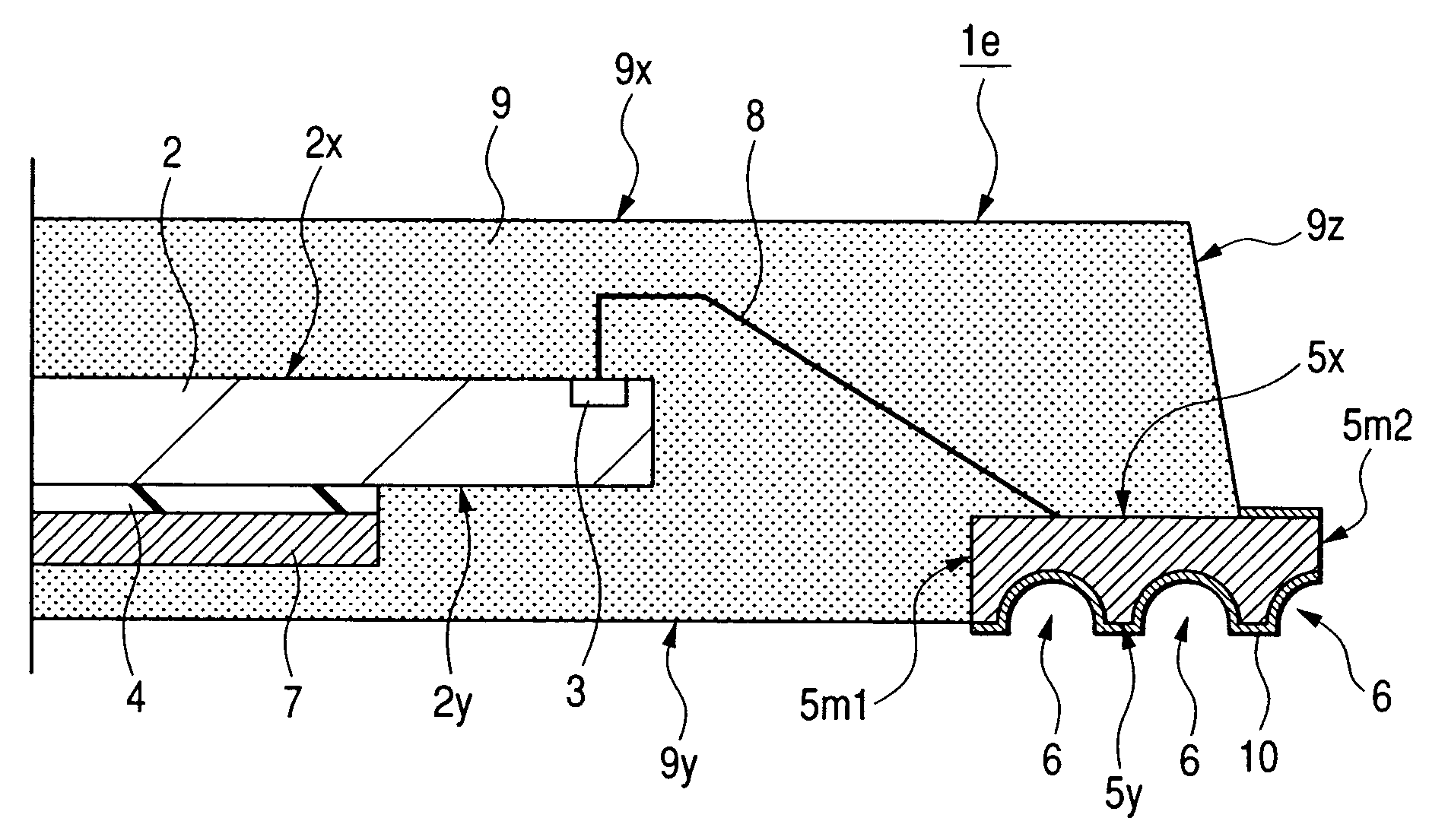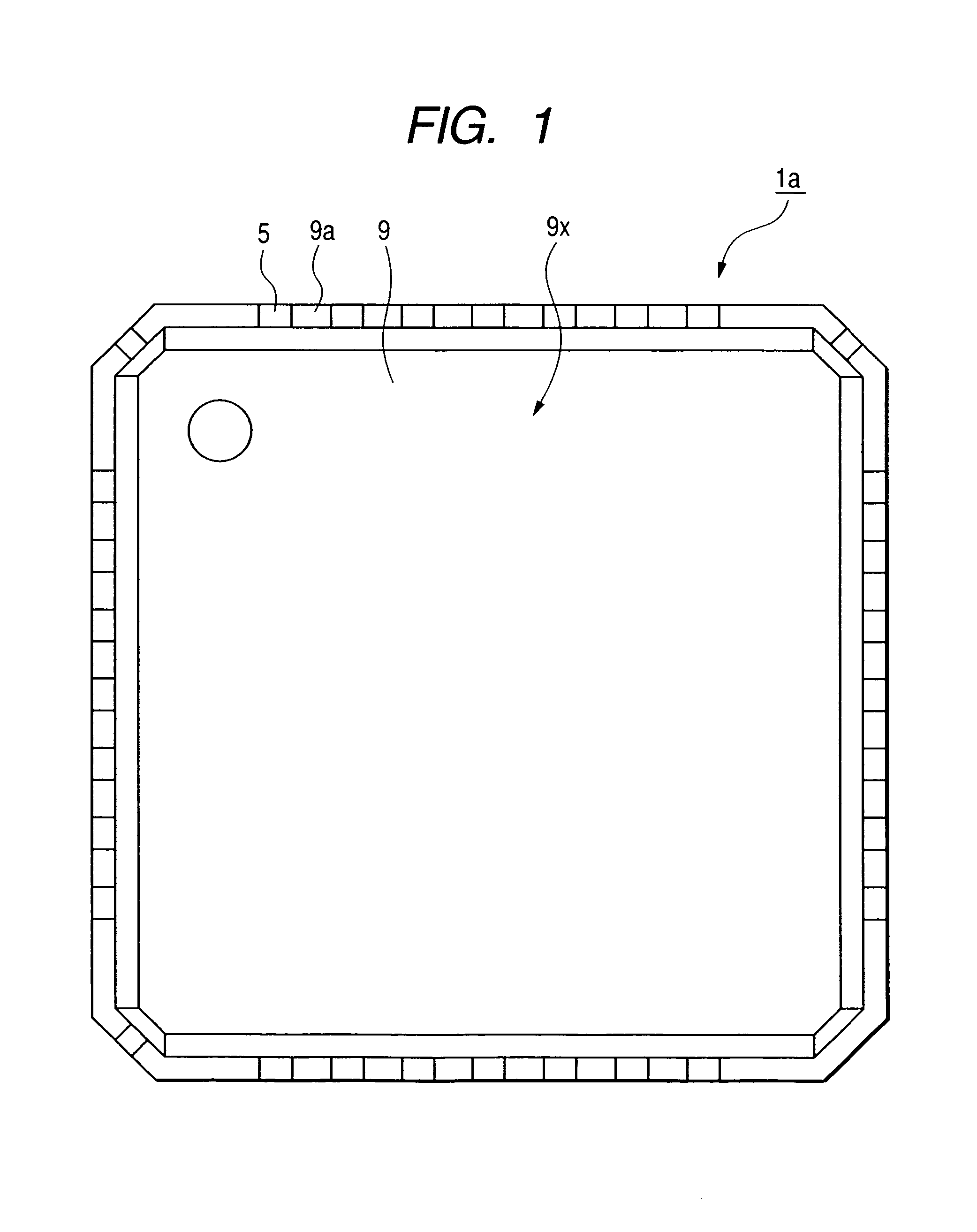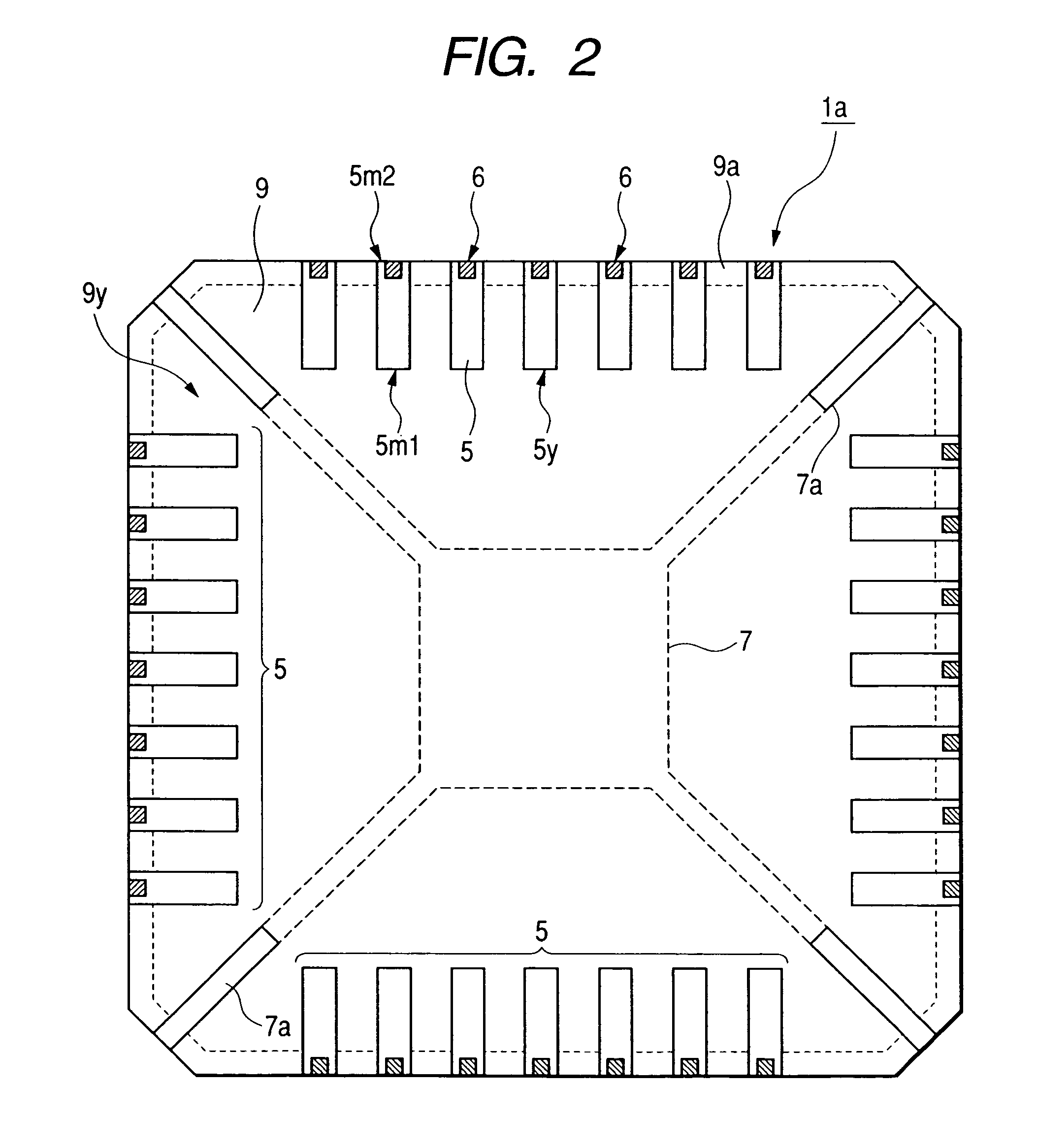Method of manufacturing a semiconductor device
a manufacturing method and semiconductor technology, applied in semiconductor devices, semiconductor/solid-state device details, electrical devices, etc., can solve the problems of high possibility of packaging defect such as peeling of semiconductor devices from wiring substrates, short length of soldered portions for external connection of each lead, etc., to improve packaging reliability of semiconductor devices and reduce the size of semiconductor devices
- Summary
- Abstract
- Description
- Claims
- Application Information
AI Technical Summary
Benefits of technology
Problems solved by technology
Method used
Image
Examples
first embodiment
[0069]In this first embodiment, reference will be made to an example of application of the present invention to a QFN type semiconductor device as a non-leaded semiconductor device in which leads are partially exposed as terminal portions for external connection to a back surface of a resin sealing body.
[0070]FIGS. 1 to 18 are related to a semiconductor device according to a first embodiment of the present invention, of which FIG. 1 is a schematic plan view (top view) showing an appearance structure of the semiconductor device, FIG. 2 is a schematic bottom view (underside view) thereof, FIG. 3 is a partially enlarged, schematic bottom view (underside view) of FIG. 2, FIGS. 4(a) and 4(b) show an internal structure of the semiconductor device, of which FIG. 4(a) is a schematic plan view with an upper portion of a resin sealing body removed and FIG. 4(b) is a schematic sectional view taken along line a-a in FIG. 4(a), FIG. 5 is a partially enlarged, schematic sectional view of FIG. 4(b...
second embodiment
[0122]In this second embodiment, a description will be given of an example in which the present invention is applied to a semiconductor device including leads provided with anti-dislodgment means.
[0123]FIG. 19 is a schematic sectional view showing a part of an internal structure of the semiconductor device according to this second embodiment of the present invention, and FIG. 20 is a schematic bottom view (underside view) of a lead shown in FIG. 19.
[0124]As shown in FIG. 19, the semiconductor device of this second embodiment, indicated at 1b, is basically of the same construction as the previous first embodiment, with a difference lying in the construction of each lead 5.
[0125]As shown in FIGS. 19 and 20, each lead 5 has, in addition to the above construction, a third surface Syl positioned on the side opposite to the first surface 5x and closer to the first surface 5x than the second surface 5y. The third surface 5yl is contiguous to the first end face 5m1, is positioned within the...
third embodiment
[0128]In this third embodiment, a description will be given of a first modification in which the shape of a recessed portion formed in each lead is changed.
[0129]FIG. 21 is a schematic sectional view showing a part of an internal structure of a semiconductor device according to a third embodiment of the present invention and FIG. 22 is a schematic bottom view (underside view) of a lead shown in FIG. 21.
[0130]The recessed portion 6 in the first embodiment is formed outside a side face 9z of the resin sealing body 9. As shown in FIG. 21, a recessed portion 6 used in this third embodiment is formed both outside and inside a side face 9z of the resin sealing body 9. As shown in FIG. 22, the recessed portion 6 is exposed from the second end face 5m2 of each lead 5 and is spaced away from both side faces opposed to each other in the width direction of the lead 5 and also from the first end face 5m1. According to such a construction, in comparison with the first embodiment, when the semico...
PUM
 Login to View More
Login to View More Abstract
Description
Claims
Application Information
 Login to View More
Login to View More - R&D
- Intellectual Property
- Life Sciences
- Materials
- Tech Scout
- Unparalleled Data Quality
- Higher Quality Content
- 60% Fewer Hallucinations
Browse by: Latest US Patents, China's latest patents, Technical Efficacy Thesaurus, Application Domain, Technology Topic, Popular Technical Reports.
© 2025 PatSnap. All rights reserved.Legal|Privacy policy|Modern Slavery Act Transparency Statement|Sitemap|About US| Contact US: help@patsnap.com



